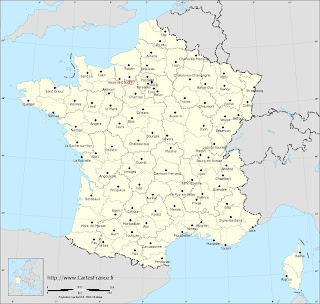According to Wiki, prior to 2005
Acacia was a genus of shubs and trees that contains about 1,300 species. Most (>950) are native to Australia and the rest spread around warm-temperate regions including Europe, Africa, southern Asia and North and South America. In 2005 the genus was divided into five separate genera. The genus
Acacia was retained for most Australian species and a few in tropical Asia, Madagascar and the Pacific Islands. Most species outside of Australia (and a few Australian species) were reclassified as genera
Vachiella and
Senegalia, and a few dozen species from the Americas were classified under the genera
Acaciella and
Mariosousa. To get a better appreciation of the diversity and geographic location of this genus of shrubs/trees I direct you to the French Acacia
wiki-site. Of note, the names 'acacia' comes from the Greek for thorn, 'akis.' Also of interest, most Australian acacias are not thorny, while most non-Australian ones are. This makes me wonder how acacia got its name when most of the genera are Australian and not thorny. The answer is that Carl Linnaeus, a Swedish botanist, is credited with first describing the acacias and his description is based on a thorny African species. Imagine if he had been working in Australia, the acacias would be called something completely different.
 |
| Acacia blooms |
Changing the taxonomy was apparently a very controversial move.Those who don't agree with the changes continue to use the old taxonomy. All this to say that it is a little bit confusing to know what Genus species to attribute to the source of the acacia honey I have that originates in France.
To complicate matters, there is a tree commonly called 'False Acacia' (
Robinia pseudoacacia) or 'Black Locust' that is widely found in Europe and North America, as well as in other regions (it is native to North America but has been successfully cultivated in other countries). This is the tree that I had always known as 'acacia.' In fact some online research state that
Robinia pseudoacacia is the source of acacia honey in France. Could it be that Acacia honey is in fact not Acacia honey, but Black Locust honey? I think this is the case (!)
 |
| Black Locust (False Acacia) blooms |
It seems that Black Locust is a major honey plant. It has a very short (about a week) blooming period (usually at the end of May and beginning of June). Blooms, which are extremely fragrant, are very sensitive to weather conditions, though, and this results in inconsistent honey productions year to year.
Apart from an excellent source for honey production, Black Locust wood is hard, resistant to rot and durable, making it suitable for furniture, flooring, etc. It is also planted for fire wood as it grows quickly in a variety of soils. The bark and leaves of the Black Locust are toxic but the seeds, young pods and flowers are edible; whatever poisons they contain are sensitive to heat. I can personally attest to this. My aunt makes acacia doughnuts by coating the flowers in pancake batter, quickly deep-frying them in oil and serving them with powdered sugar. The flowers have a very sweet, floral fragrance and the doughnuts taste as good as they smell. Acacia doughnuts are a real treat and a sign that summer has almost arrived.
 |
| Acacia doughnuts (beignets d'acacia) |
My acacia honey comes from Brive-la-Gaillarde in France and was produced and distributed by Armondo and Dominque Filipe who are apiarists near Ussac, just north of Brive-le-Gaillarde. Brive-la-Gaillarde is located in the south west of France in the Limousin region in the Corrèze
department. The Filipes have produce honey and other products under the "Miel du pays de Brive" et "Li
mousin Gourmand" brands for over 15 years, and also make and sell hives.They have a wonderful
website describing their operation and products (including acacia, bourdaine (black alder), tilleul (linden), montagne (mountain) and Châtaigner (chestnut) honeys, royal jelly and pollen). They also welcoming visitors, in case you are ever in this lovely region of France.
 |
| Brive-la-Gaillarde, France (in red) |
Their story is interesting. In 1995, out of curiosity, they bought 2 hives. Fast forward 15 years and they now have >400 and a thriving honey business. Also of note, the Filipe's label for their honey depicts St. Martin's church in Brive-la-Gaillarde (see honey photo below).
If the truth be told, I've had this honey for a while. I got in on a trip to Limousin years ago (the label says that it is best to consume it by 2004!) Acacia honey is usually a very clear, very light yellow color, but my honey has mellowed and is now a robust reddish-orange, although still very clear. It has a medium consistency and a very clean, uncomplicated, delicately floral, moderately sweet taste from beginning to end. Given how long I've had this honey I can confirm that acacia honey is not a fast crystallizer. In fact, even after all these years, this honey is clear and crystal free.
 |
| Acacia (Black Locust) honey From Brive-la-Gaillarde, France |
Acacia honey is ideal drizzled on plain yoghurt, in teas (the flavor is delicate and won't change the taste too much), in hot cereal or in baking. It is also very tasty on its own. The fact that is is a very slow crystallizer also makes it a good choice to spread on toast or for people who don't use honey much but when they do don't want to warm it up to get rid of crystals.


























